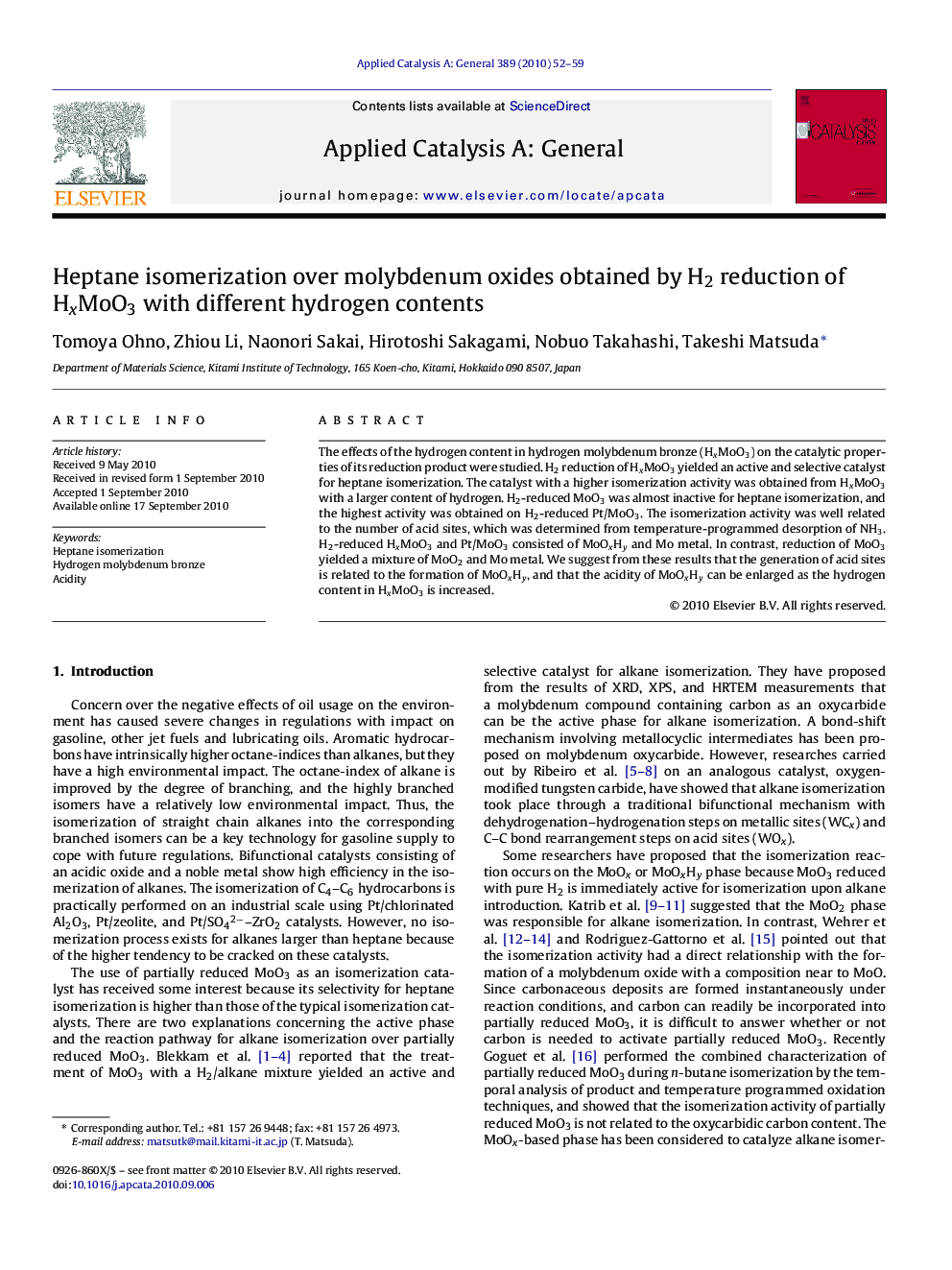| Article ID | Journal | Published Year | Pages | File Type |
|---|---|---|---|---|
| 41880 | Applied Catalysis A: General | 2010 | 8 Pages |
The effects of the hydrogen content in hydrogen molybdenum bronze (HxMoO3) on the catalytic properties of its reduction product were studied. H2 reduction of HxMoO3 yielded an active and selective catalyst for heptane isomerization. The catalyst with a higher isomerization activity was obtained from HxMoO3 with a larger content of hydrogen. H2-reduced MoO3 was almost inactive for heptane isomerization, and the highest activity was obtained on H2-reduced Pt/MoO3. The isomerization activity was well related to the number of acid sites, which was determined from temperature-programmed desorption of NH3. H2-reduced HxMoO3 and Pt/MoO3 consisted of MoOxHy and Mo metal. In contrast, reduction of MoO3 yielded a mixture of MoO2 and Mo metal. We suggest from these results that the generation of acid sites is related to the formation of MoOxHy, and that the acidity of MoOxHy can be enlarged as the hydrogen content in HxMoO3 is increased.
Graphical abstractFigure optionsDownload full-size imageDownload high-quality image (35 K)Download as PowerPoint slideResearch highlights▶ The catalytic properties of H2-reduced MoO3, HxMoO3 with different hydrogen contents, and Pt/MoO3 were studied. ▶ The heptane isomerization activity increased in the following order: MoO3 < H0.34MoO3 < H0.93MoO3 < H1.68MoO3 < Pt/MoO3. ▶ The isomerization activity was related to the concentration of acid sites.
